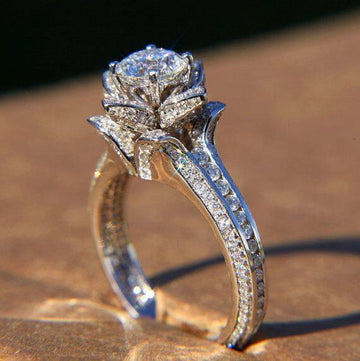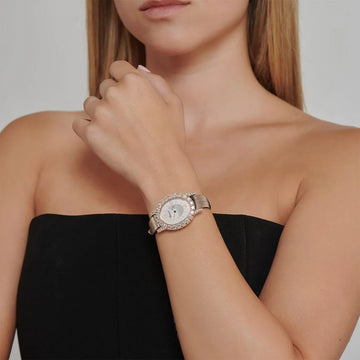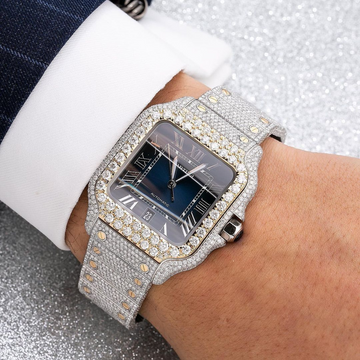Intricate Watch Complications
we believe that a watch is more than just a timepiece; it's a work of art and a testament to human ingenuity. Our collection features watches with a variety of intricate complications that showcase exceptional craftsmanship and technical mastery. From chronographs and moon phases to tourbillons and perpetual calendars, each complication adds a layer of sophistication and functionality to our luxurious timepieces.
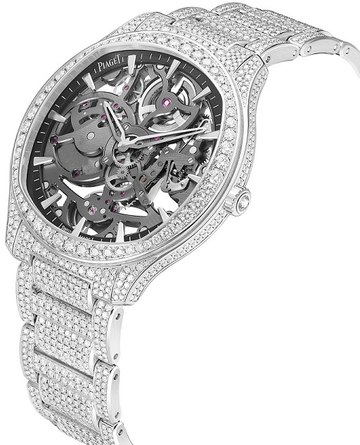
Sophisticated Complications
The Precision of Complicated
At Kloira, the artistry of watch complications is where engineering meets elegance. Our timepieces are meticulously crafted to include sophisticated complications such as perpetual calendars, minute repeaters, and dual time zones. These features not only enhance the functionality of our watches but also demonstrate our commitment to precision and innovation.
Each complication is a testament to our master watchmakers' expertise and dedication. The intricate mechanisms are carefully assembled, ensuring flawless performance and durability. Whether you're tracking lunar phases or setting a second time zone, our complications are designed to enrich your experience, making each moment extraordinary.
Explore the unparalleled craftsmanship and technical prowess that define Kloira's watches, and discover how our complications elevate the art of timekeeping to new heights.
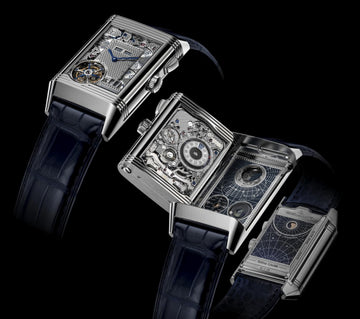
Precision Engineering:
Kloira watches are crafted with meticulous precision, ensuring each movement operates flawlessly. This dedication to detail makes our timepieces masterpieces of mechanical art.
Innovative Features:
Our watches go beyond timekeeping with advanced features like chronographs and perpetual calendars, designed for collectors who value both functionality and sophistication.
Exquisite Design:
Kloira’s design philosophy blends tradition with modernity, creating timepieces that are both timeless and contemporary.
Luxurious Craftsmanship:
Each Kloira watch is a showcase of luxurious craftsmanship, using only the finest diamonds and precious metals for a stunning and durable finish.
More Guide
Frequently Ask Question
What are the different movements in watches?
Watches typically feature three main types of movements: manual, automatic, and quartz. Manual movements require daily winding and are known for their traditional craftsmanship. Automatic movements self-wind through the wearer’s wrist motion, offering convenience without daily winding. Quartz movements, powered by a battery, provide superior accuracy and require minimal maintenance. Additionally, hybrid movements like kinetic and solar combine mechanical and quartz elements for enhanced functionality.
Which movement is best for watch?
The best movement depends on personal preferences. Manual movements are ideal for traditionalists who enjoy daily winding. Automatic movements offer convenience through self-winding. Quartz movements are perfect for those who prioritize accuracy and low maintenance. Each type has its advantages, and the choice depends on whether you value heritage, convenience, or precision in your timepiece.
What is the difference between mechanical and automatic movements?
Mechanical movements require manual winding to power the watch, while automatic movements wind themselves through the motion of the wrist. Both are prized for their craftsmanship but differ in convenience.
Which type of motion is watch?
Watches utilize either mechanical or electronic motion. Mechanical watches, including manual and automatic, operate through gears and springs. Quartz watches use electronic motion, powered by a battery and a quartz crystal. Mechanical movements create a consistent ticking motion, while quartz movements offer high accuracy through precise vibrations.
How to choose a watch movement?
Choosing a watch movement involves considering your lifestyle and preferences. Manual movements suit those who appreciate traditional craftsmanship. Automatic movements are convenient, self-winding through wrist motion. Quartz movements prioritize accuracy and low maintenance. Consider factors like budget and desired features to select the best movement for your needs.
Which watch movement is most accurate?
Quartz movements are the most accurate, powered by a battery and a vibrating quartz crystal. They lose or gain only a few seconds per month. In contrast, mechanical movements, including manual and automatic, have variations of several seconds per day. Quartz watches are preferred for their superior accuracy.
What movement do luxury watches use?
Luxury watches predominantly use mechanical movements, including manual and automatic, due to their intricate craftsmanship. High-end brands often develop in-house movements, ensuring exclusivity and superior quality. While quartz movements are less common, some luxury brands offer high-end quartz models for unparalleled accuracy.
Which is better, quartz or automatic watch?
The choice between quartz and automatic watches depends on preferences. Quartz watches are highly accurate, low-maintenance, and affordable, requiring only periodic battery changes. Automatic watches are cherished for their craftsmanship and heritage, self-winding through wrist motion. Choose quartz for precision and convenience, automatic for traditional mechanical appeal.
Which watch movement is more expensive?
Mechanical movements, including manual and automatic, are generally more expensive than quartz movements due to intricate craftsmanship and complex engineering. Brands that develop in-house movements command premium prices. Quartz movements are simpler and cheaper to produce, making quartz watches more affordable, though high-end quartz models can be expensive.
How to tell if a watch is automatic?
To identify an automatic watch, observe the second hand’s smooth, sweeping motion, unlike the ticking motion of quartz watches. Check if the watch self-winds with wrist motion. Many automatic watches have a transparent case back to view the movement. Listen for a continuous ticking sound, different from quartz watches’ distinct ticks.










